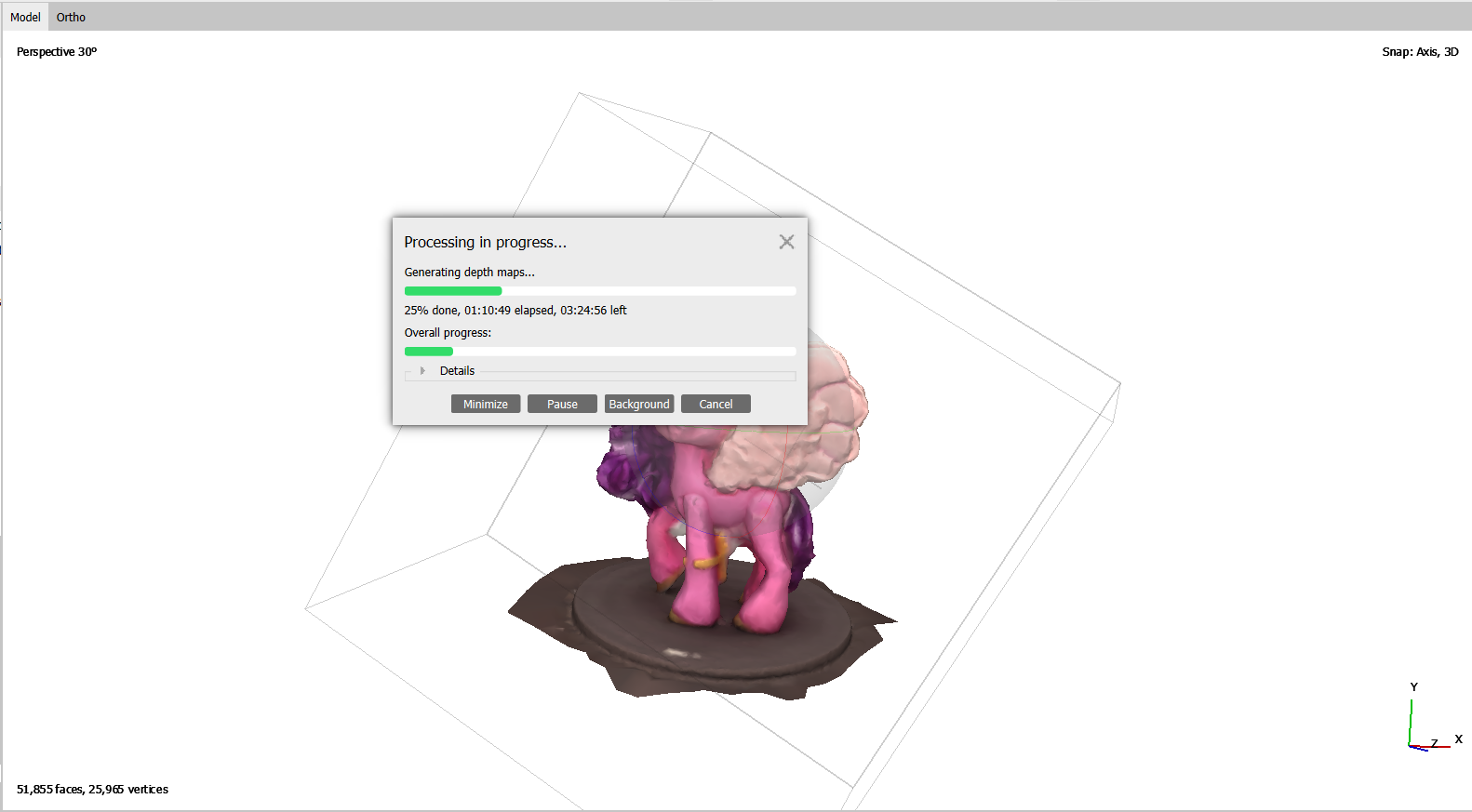
Although a project as ours can combine fun and learning, the matter of accessibility has been on the back of our minds throughout the process. Questions regarding our ability to appropriately photograph the toy within the time where we had access to the necessary tools, our laptop’s abilities to process the information adequately, and our access to toys overall permeate the project. The university provided us with timeslots for working with lightboxes, cameras, white balance cards, and laptops, and without access to such tools we might not have had a product to present here. Even with all of these tools, we often had to rely on the resources we had, leading to one point cloud processing taking over 24h and taking away all ability to use the computer for other purposes. Additionally, doing a scholarly edition by creating your own model is an emotionally intensive process, and doing this within a group alleviated stress through our support of each other. Carrying out such a project individually can therefore be a great effort for the researcher, and hinder one’s ability to complete their project.

Processing in Agisoft Metashape
All in all, this process requires heavy computational power, quality equipment, and time. The lower your access to the first two, the higher are the requirements of the third. Being afforded the time and resources to work on this product is ultimately a privilege, and we encourage all who are reading this to reflect on who might be missing out on this opportunity, as well as which items are not being digitized and which narratives are not being written. Over the past decades there has been growing attention to gaps in research concerning marginalized voices. The schools of thought of feminism and post-colonialism bring our attention to historically underrepresented views, peoples, and knowledge. Similarly, we ask you to consider how current practices might exclude these groups and their toys’ stories. Universities with lower budgets might not be able to afford such spaces as the PLaNT at Maastricht University, the maker space we used. In fact, access to universities in general is still an obstacle for many people globally. Sourcing models online, although an option, leaves the researcher limited by the objects digitized by others. In our edition, for example, we could not find good quality 3D models of My Little Pony toys, and mostly came across born-digital representations of characters instead.
These observations might be obsolete soon, as new technologies provide better and better cameras and software for users, lowering the barrier of entry. Additionally, these digitalizations provide more and more access to objects and knowledge previously constrained to a physical location only accessible to those who could afford/were able to make the trip. The issue of accessibility is not a straightforward one, but exists in a spectrum where multiple factors impact it differently for every type of audience.
In summary, we ask you to keep in mind from now on these matters of accessibility, and amplify projects which seek to directly address barriers of entry for more modern forms of scholarly work, while appreciating the existing resources out there.